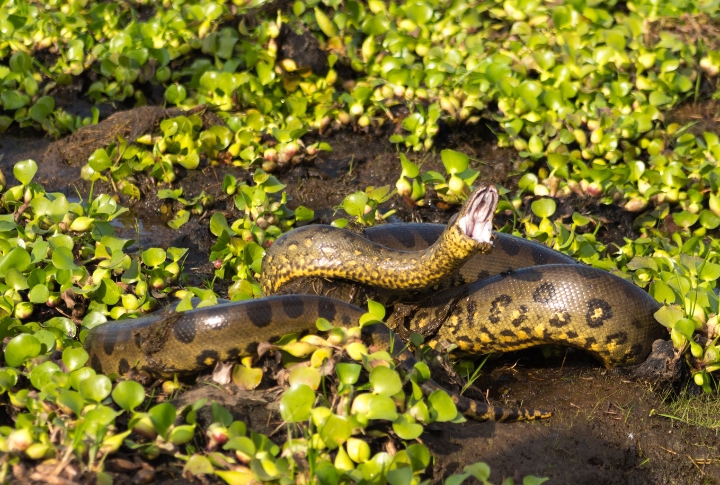
In 2024, scientists in the Amazon rainforest made a jaw-dropping discovery—a massive snake now known as the northern green anaconda. This newly identified species has blown researchers away with its unbelievable size and power. Swipe through to explore the facts behind this giant predator.
Discovery Of The Northern Green Anaconda
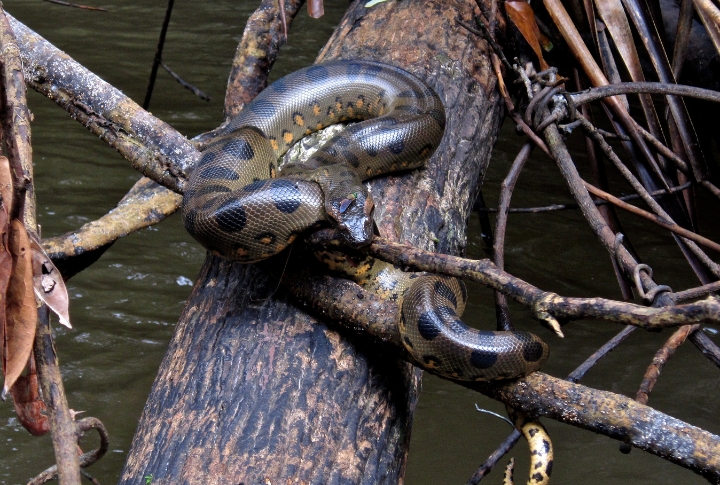
Professor Bryan Fry’s expedition in the Ecuadorian Amazon led to the discovery of the largest anaconda ever recorded. This anaconda, found in the Baihuaeri Waorani Territory, has been confirmed through genetic analysis to be a distinct species from the southern variant.
A Massive, Record-Breaking Snake

This creature is absolutely massive. Some of these enormous anacondas can stretch well past 24 feet in length and tip the scales at over 1,100 pounds—that’s heavier than a grand piano. Without question, it ranks among the largest snakes ever discovered living in the wild.
A Powerful Predator
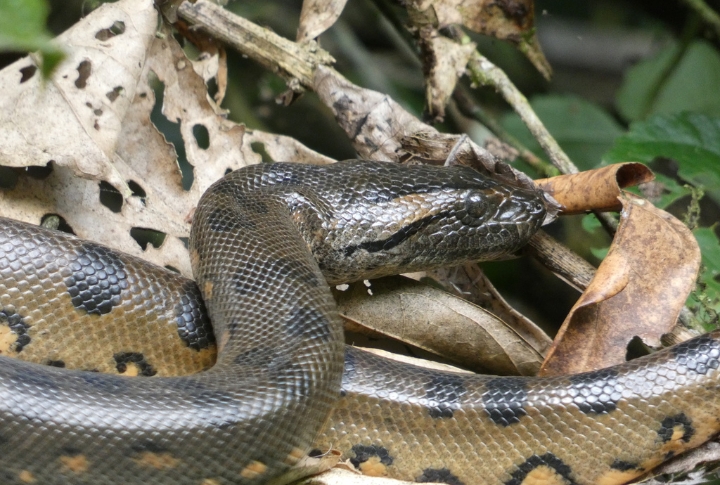
Beneath the thick, muddy water, this massive snake waits in total silence, nearly impossible to spot. It doesn’t need venom to bring down prey—its raw power does the job fast. With perfect camouflage and explosive speed, it strikes before anything nearby even knows it’s being watched.
Master Of The Night

The northern green anaconda hunts mostly at night, using low light to its advantage. Darkness makes it harder to detect, allowing it to silently close in on unsuspecting prey. This nocturnal lifestyle boosts its stealth and success deep in the Amazon’s shadowy waterways.
Carries A Crushing Force
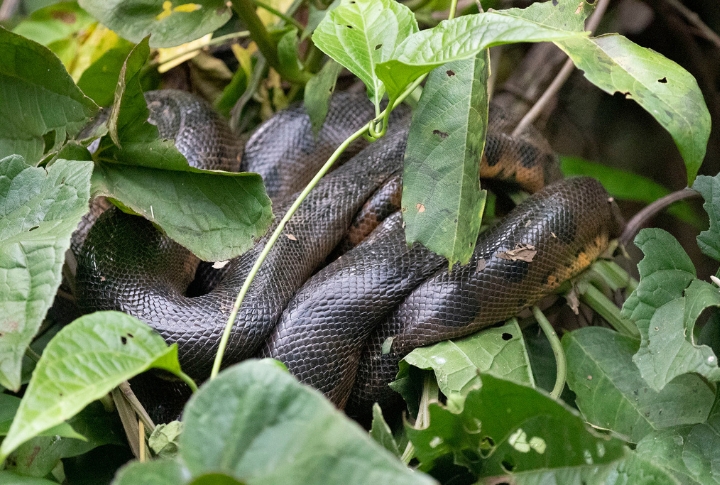
Known green anacondas apply over 90 psi, which is enough force to stop a heart. Scientists believe this newly discovered species may surpass those records due to higher muscle density. Though precise strength is still unmeasured, researchers treat this animal with heightened caution.
The Northern Green Anaconda’s Diet
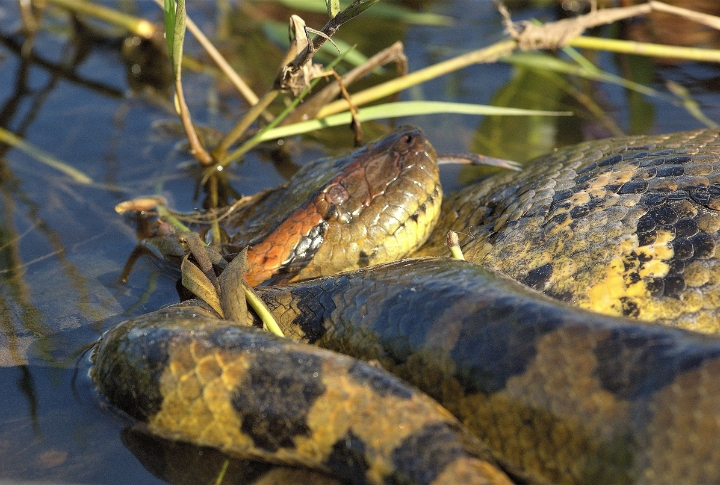
Local accounts confirm the northern green anaconda preys on large animals such as capybaras, caimans, and deer. Its considerable size allows it to thrive on just a few substantial meals annually. Researchers are currently examining the possibility that this species may hunt even larger prey than previously observed.
How Its Habitat Shapes Its Evolution
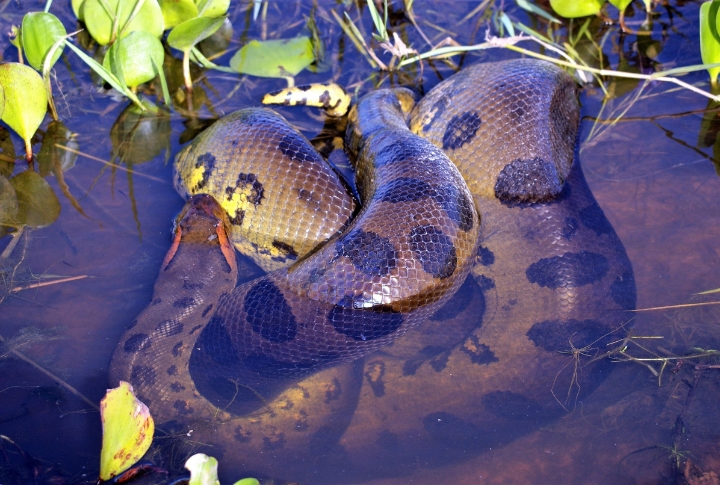
This snake’s preferred habitat includes flooded forests and calm Amazonian waters. Experts believe its extreme size may have evolved to enhance its ability to hunt in deeper environments. Conservationists now express concern, as deforestation in these regions could severely impact the species’ ability to thrive in its natural setting.
How It’s Different From Other Anacondas
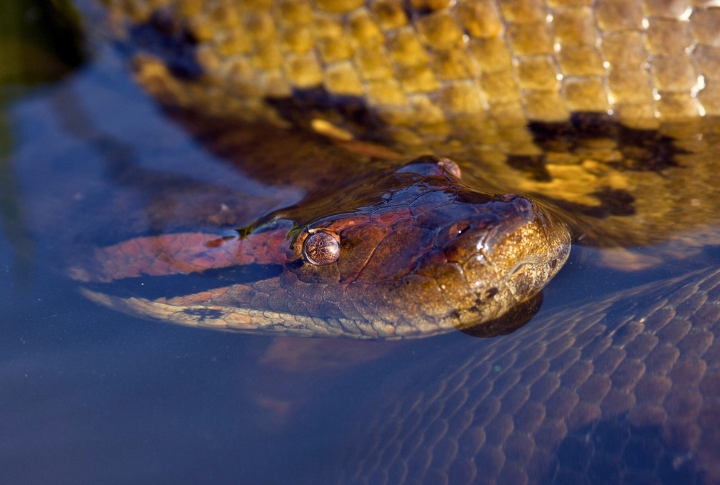
Molecular analysis has confirmed that this anaconda is distinct from others and has a unique genetic composition. This speciation event likely occurred several millennia ago, coinciding with ecological adaptation. Scientific efforts are ongoing to document the phenotypic traits associated with this genetic distinction.
Did Amazon Legends Predict Its Discovery?

Indigenous folklore has long referenced giant snakes. Some of these were said to capsize boats or consume humans whole. The discovery of this giant green anaconda brings a new perspective to those legends. While stories may be exaggerated, they could be grounded in real encounters with extraordinary creatures like this one.
Why Scientists Are Urgently Gathering Data

This incredible predator lives in one of the Amazon’s most delicate ecosystems. With deforestation on the rise and poaching pressures growing, scientists are scrambling to collect every possible detail. Understanding this snake could help scientists learn more about how the rainforest works, before it’s too late to find out.

